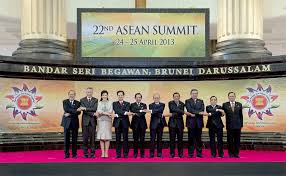ASEAN may be a region with an emerging single identity, but most foreign investors will compare the pros and cons of investment in one ASEAN market across a range of subtle factors.
We look at some of the key emerging trends which will influence the decision-making process in 2014.
- Emergence of ASEAN Brands

The imminent reality of the ASEAN Economic Community (due December 2015) has kickstarted the development of brands seeking to service all ASEAN markets. By associating with the emerging identify of ASEAN and its 600m+ people, brands can escape their otherwise national market perceptions.
Key Questions:
- How can foreign companies tap into this emerging pan-ASEAN brand phenomenon?
- Will ASEAN Governments regulate use of the word ASEAN or its logo?
- “China+1” investment
A China plus one strategy sees foreign investors diversifying from an over-reliance on investment in China. Most typically, manufacturers with plants in China will seek JV or owned facilities in second Asian countries, such as Thailand. This hedges against rising labour and raw materials costs in China.
It is a difficult phenomenon to measure, but the rise and fall of manufacturing machinery imports into China as compared to ASEAN can be one indicator. For example, Japanese exports of high-end injection moulding machine to China and HK fell by 30% in 2012, and nearly doubled to Thailand over the same period.
Key Questions:
- Which ASEAN markets are key beneficiaries of China plus one phenomenon? Top contenders are: Indonesia, Thailand, Vietnam, and perhaps now Myanmar?
- Is it time now for large service industries to build out their China plus one strategies?
- Thailand – Craving Stability
In early 2014, Thailand’s political troubles are having seemingly little impact on the perspective of foreign investors.
This 2014 Economist Survey shows Thailand enjoys the lowest susceptibility to foreign investment reduction of all major Asian markets.
Can Thailand defy the odds that where politics stumbles the economy crumbles?
Thai manufacturers also face the new challenge of falling out of Europe’s developing-country preferential tariff scheme. EU customers will now pay 5% more for Thai shrimp, and 3.5% for tuna. This can be significant in the tight-margin global seafood trade.
Key Questions:
- Are European customers now renegotiating their arrangements with Thai suppliers?
- Will foreign investor confidence in Thailand start to erode if political troubles continue, or are large foreign investors on the Eastern Seabord somehow quarantined?
- Myanmar Integration into ASEAN
The column inches on opportunities in Myanmar will continue to grow in 2014, not the least as it assumes the chairmanship of ASEAN in 2014. But, as asked by this excellent blog post (http://bit.ly/LclKoW), just who is actually making money in Myanmar? The answer seems to be foreign consultants, researchers, and the local real estate industry.
The story for those invested in ASEAN is quite different. The coming integration of Myanmar into the wider ASEAN economy will have perhaps the greatest impact on the ASEAN project since its founding.
The key opportunities are in extending regional supply chains to Myanmar – from raw materials procurement, to manufacturing to warehousing. The concept of “Made in Myanmar” is not just novel, it is also a lucrative opportunity for duty free entry into markets such as the EU, under the ‘GSP’ trade system for developing countries.
Key Questions:
- Will the coming detailed regulations on Myanmar’s new foreign investment law increase confidence?
- What parts of your ASEAN business could be transplanted efficiently into Myanmar?
- Investment Incentive Musical Chairs
ASEAN Governments are obsessed with tinkering with their investment incentives regimes. Do they actually play a role in attracting foreign investors? Some say yes, some say not really. My experience is that the business case for foreign investment is always built without consideration for possible incentives, and any resulting benefit is a sweetener.
2014 will see some mixed signals on investment incentives.
Thailand is moving to ‘flatten’ its incentives regime by reducing the number of categories which are eligible for ‘promotion’ by the Board of Investment. Around 80 activities will cease to be eligible for valuable 8-year corporate tax exemptions.
Malaysia, in 2014, is opening up its automotive sector to foreign investors with lucrative tax incentives and soft loans.
Indonesia, about to enter hotly contested elections, has announced the liberalisation of investment sectors from healthcare, to tourism and transport. At the same time, it has implemented its mineral export ban, leading to 30,000 job losses and confusion and ire among foreign mining investors.
Key Questions:
- Do foreign firms place significance on investment incentives when comparing markets?
- Will Myanmar, Cambodia, Laos, Vietnam finally develop more transparent, navigable investment procedures?
Danny Burrows, Director of TradeWorthy.
Email: danny.burrows@trade-worthy.com
Linkedin: http://au.linkedin.com/in/burrowsdanny
Twitter: https://twitter.com/Tradeworthy
web: www.trade-worthy.com


